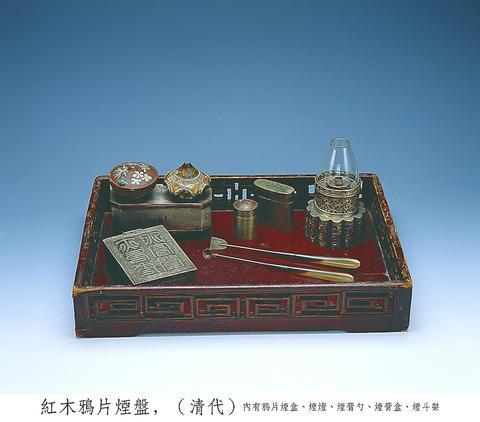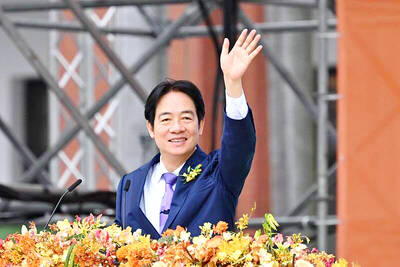The Qing dynasty's Qianlong emperor at the close of the 18th century wrote to King George III after snubbing a British diplomatic mission: "We have never valued ingenious articles, nor do we have the slightest need of your country's manufactures. Therefore, O King, as regards your request to send someone to remain at the capital, while it is not in harmony with the regulations of the Celestial Empire we also feel very much that it is of no advantage to your country."
Needless to say, the British saw things in a different light, not least because the growing trade they were carrying out with China was resulting in an alarming flow of silver out of British coffers and into the Qing court's pockets.
The British solution for the trade imbalance at the beginning of the 19th century was simple: start selling opium to China. The strategy worked and its aftershocks can still be felt in Chinese apprehension toward the West in general and toward global trade in particular.

PHOTO COURTESY OF NATIONAL HISTORY MUSEUM
When the Daoguang emperor decided to take decisive action against opium in 1838 he called upon Lin Tse-hsu (林則徐), a scholar-bureaucrat who opted for a classically Confucian combination of moral persuasion and forceful crackdowns to enforce the ban on opium that was already in place but flagrantly ignored by both foreign and local traders. His methods failed spectacularly, but he nonetheless became a potent symbol to explain China's bitter experience of interaction with Western powers in the 19th century.
In a first for a local museum, the National Museum of History is holding an exhibition on Lin's life and work -- and on the opium trade he tried to stem.
Unfortunately, the show is unbearably static, featuring an assortment of opium pipes and utensils and old photos of addicts in various states of blissful repose. There is an abundance of dull wall text, and to be fair, it steers clear of the standard line on Lin in China that he was a heroic patriot who became victim of implacable and dastardly foreigners, but it's entirely in Chinese. What little English information is provided in the exhibition pamphlet is poorly translated and absent of detail. Perhaps someone forgot to inform the National Museum of History that this is "Visit Taiwan Year."
On the bright side, the facts, as presented in the exhibition, portray Lin as an upright servant of the Qing court, which isn't disputed. They also highlight the fact that his final tactic of seizing and then destroying all the opium within his jurisdiction invited swift retaliation from the British in the form of the First Opium War that ended in 1842 with a massive reparations bill and the loss of Hong Kong. But that's where the history lesson ends.
The exhibition's greatest flaw is in glossing over Lin's central role in setting off a chain of events that permanently changed China. The Opium War announced China's military weakness to European powers, and these arrived in quick succession, trying to instigate wars that they could quickly win to then leverage concessions out of the Qing court.
Whether Lin could have averted a war with more deft diplomacy, or at the very least postponed foreign incursions by a few decades, are questions scholars have considered ever since Lin found himself reassigned to Xinjiang, a posting that amounted to the Qing government's worst possible demotion.
It's too bad that an exhibition dedicated to the man so studiously avoided exploring these and other critical questions.
Performance note:
What: Lin Tse-Hsu and the New Opium War
When: Now until July 11
Where: 29 Nanhai Road, Taipei (
Tickets: NT$20 for adults, NT$10 for students

May 18 to May 24 Pastor Yang Hsu’s (楊煦) congregation was shocked upon seeing the land he chose to build his orphanage. It was surrounded by mountains on three sides, and the only way to access it was to cross a river by foot. The soil was poor due to runoff, and large rocks strewn across the plot prevented much from growing. In addition, there was no running water or electricity. But it was all Yang could afford. He and his Indigenous Atayal wife Lin Feng-ying (林鳳英) had already been caring for 24 orphans in their home, and they were in

On May 2, Chinese Nationalist Party (KMT) Chairman Eric Chu (朱立倫), at a meeting in support of Taipei city councilors at party headquarters, compared President William Lai (賴清德) to Hitler. Chu claimed that unlike any other democracy worldwide in history, no other leader was rooting out opposing parties like Lai and the Democratic Progressive Party (DPP). That his statements are wildly inaccurate was not the point. It was a rallying cry, not a history lesson. This was intentional to provoke the international diplomatic community into a response, which was promptly provided. Both the German and Israeli offices issued statements on Facebook

Even by the standards of Ukraine’s International Legion, which comprises volunteers from over 55 countries, Han has an unusual backstory. Born in Taichung, he grew up in Costa Rica — then one of Taiwan’s diplomatic allies — where a relative worked for the embassy. After attending an American international high school in San Jose, Costa Rica’s capital, Han — who prefers to use only his given name for OPSEC (operations security) reasons — moved to the US in his teens. He attended Penn State University before returning to Taiwan to work in the semiconductor industry in Kaohsiung, where he

President William Lai (賴清德) yesterday delivered an address marking the first anniversary of his presidency. In the speech, Lai affirmed Taiwan’s global role in technology, trade and security. He announced economic and national security initiatives, and emphasized democratic values and cross-party cooperation. The following is the full text of his speech: Yesterday, outside of Beida Elementary School in New Taipei City’s Sanxia District (三峽), there was a major traffic accident that, sadly, claimed several lives and resulted in multiple injuries. The Executive Yuan immediately formed a task force, and last night I personally visited the victims in hospital. Central government agencies and the